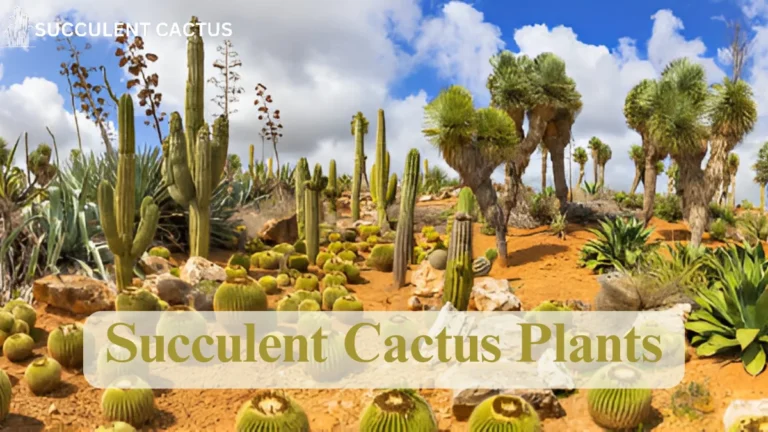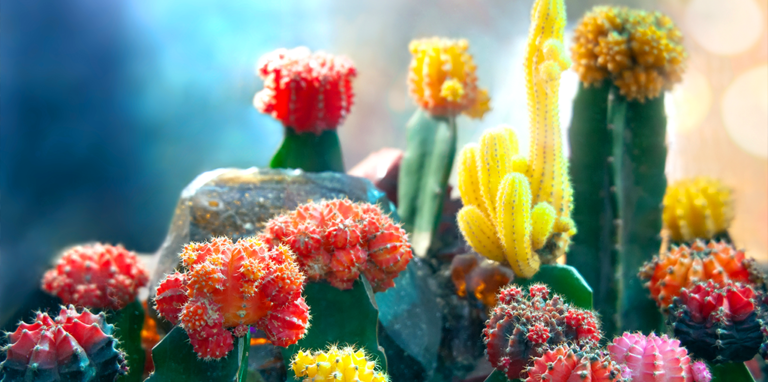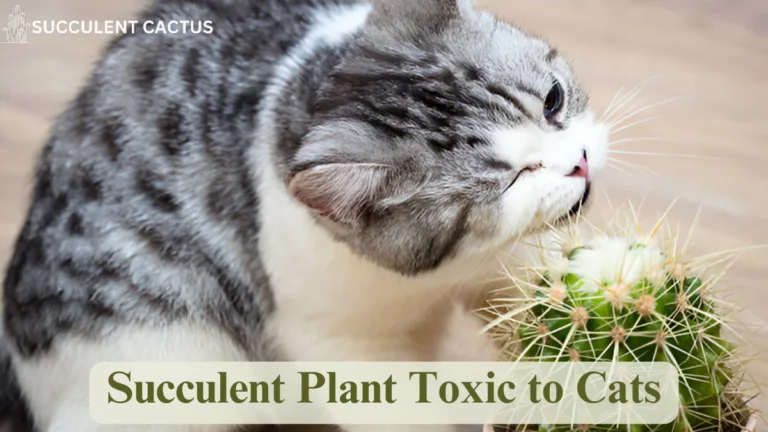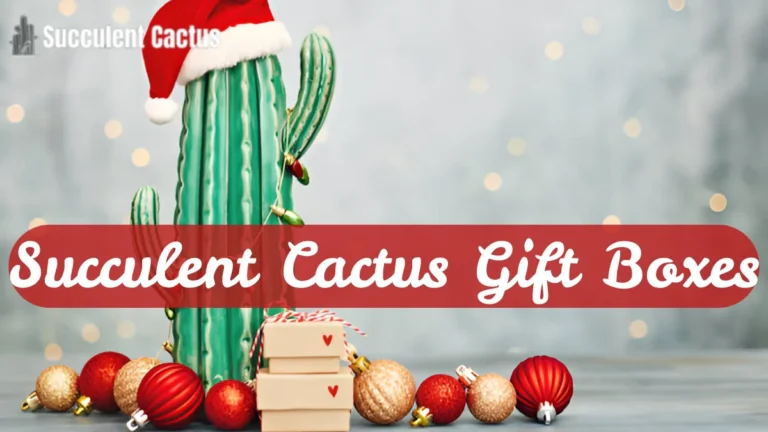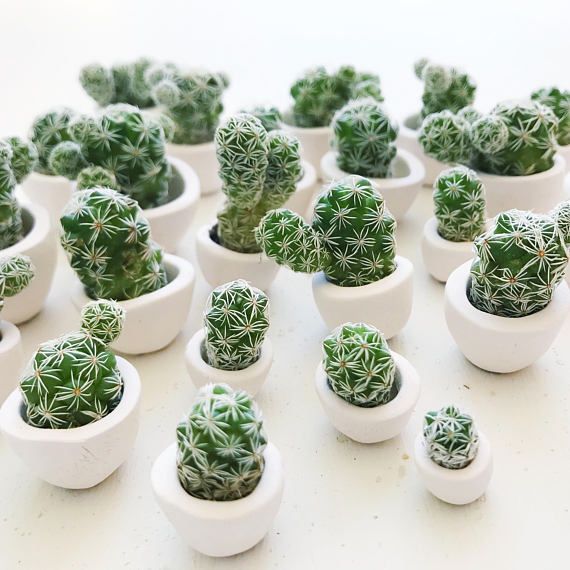Cactus and Succulent Show: A Complete Guide
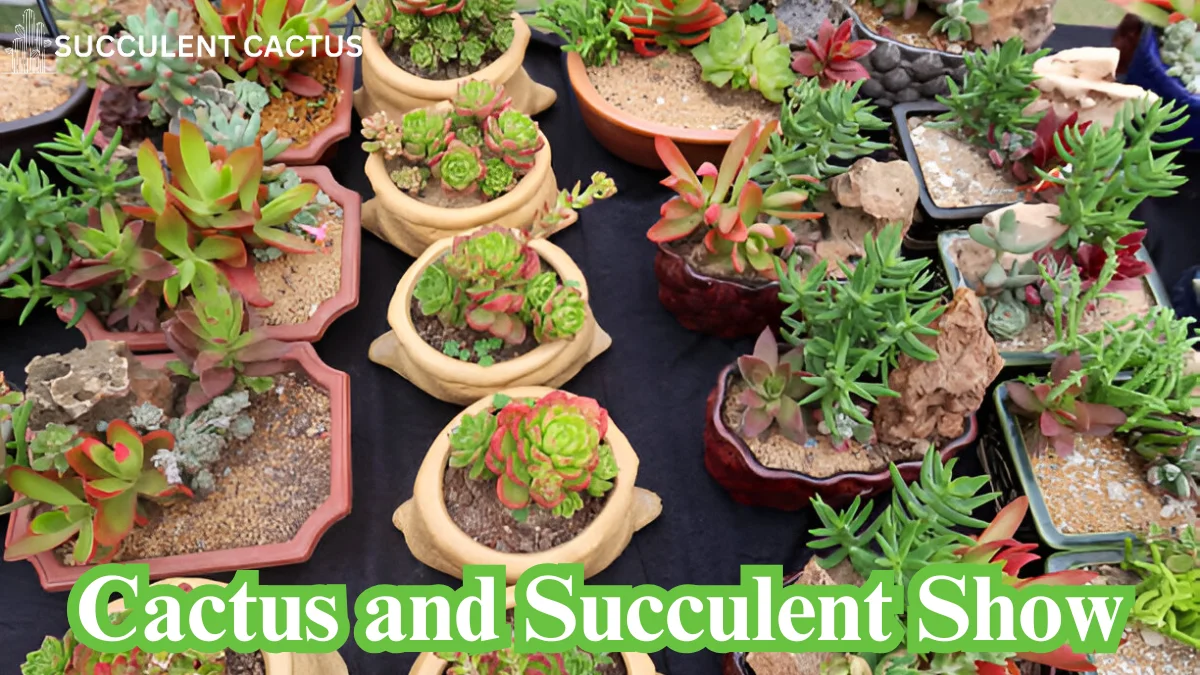
Cactus and succulent shows are a paradise for plant enthusiasts, offering an opportunity to explore exotic plants, learn cultivation tips, and meet like-minded people. The Cactus and Succulent Show promises to be an exciting event filled with rare plants, expert discussions, and innovative displays. This comprehensive guide will walk you through everything you need to know about the event, its highlights, and how to make the most of your experience.
Introduction to Cactus and Succulent Shows
Cactus and succulent shows offer an exciting and informative look into the world of desert plants. These events bring together plant enthusiasts, collectors, and experts from around the globe to celebrate the beauty and diversity of cacti and succulents. Whether you’re a seasoned grower or just getting started, attending a cactus and succulent show can provide valuable knowledge and inspiration.
What Are Cactus and Succulent Shows?
Cactus and succulent shows are organized events that feature the best specimens of these unique plants. These shows may be hosted by local societies, botanical gardens, or plant nurseries and typically involve various competitions, plant sales, and educational workshops. It’s not just about displaying plants; it’s about fostering a community of like-minded people who share a love for these hardy and fascinating species.
Why Should You Attend a Cactus and Succulent Show?
Attending a cactus and succulent show offers numerous benefits. Whether you’re seeking inspiration for your garden, looking to learn from experts, or hoping to purchase rare or hard-to-find plants, these shows provide everything you need. You also get the opportunity to meet and network with fellow enthusiasts who share your passion for growing these hardy plants.
The Growing Popularity of Cactus and Succulent Shows
Over the years, cactus and succulent shows have gained widespread popularity. As more people become interested in low-maintenance gardening and indoor plant collections, these events continue to grow in size and significance. Show organizers are reaching new audiences, and more people are discovering the benefits of these fascinating plants.
Types of Cactus and Succulent Shows
There are several types of cactus and succulent shows, each catering to different needs and interests. Whether you’re attending a large-scale national exhibition or a more intimate local gathering, each show offers something unique.
National Cactus and Succulent Exhibitions
These large-scale shows attract plant enthusiasts from all over the world. National exhibitions feature extensive plant displays, expert talks, and often feature plant competitions where the best specimens are judged based on their size, health, and uniqueness. These shows often include educational booths and workshops where attendees can learn about the different species and care requirements.
Local Cactus and Succulent Societies’ Events
Local events often have a more personal and intimate feel. These smaller gatherings provide an excellent opportunity to meet people in your area who share an interest in cacti and succulents. These shows may focus on local species or emphasize sustainable gardening practices. It’s also common for local events to feature plant swaps, where attendees can exchange plants, cuttings, or seeds.
Specialized Cactus and Succulent Shows
Some shows specialize in specific types of cacti and succulents. For example, there may be a show dedicated entirely to agaves, or a focus on rare and endangered species. These events allow plant collectors and hobbyists to find niche plants that aren’t commonly found in larger exhibitions. Specialized shows often feature experts in the field who give talks and demonstrations on how to care for and cultivate these rare varieties.
What to Expect at a Cactus and Succulent Show
When you attend a cactus and succulent show, there are a variety of activities and exhibits to enjoy. From plant displays to expert talks, there’s something for everyone at these events.
Exhibits and Plant Displays
The main attraction at a cactus and succulent show is the vast array of plants on display. These plants may be arranged in thematic displays or divided by species. Some exhibits focus on aesthetic arrangements, while others may display plants according to their natural habitats. Whether you’re a beginner or an expert, you’re sure to find inspiration for your own garden or collection.
Workshops and Educational Sessions
Many cactus and succulent shows offer workshops where you can learn about plant care, propagation, and even how to design a succulent garden. Workshops are often conducted by experienced horticulturists, and some may even provide hands-on activities. These sessions can be a great opportunity to ask questions and learn about new techniques for growing these hardy plants.
Competitions and Judging
At many cactus and succulent shows, attendees can participate in plant competitions. These competitions allow growers to display their best specimens and compete for awards in categories like “Best Cactus” or “Most Unusual Succulent.” The judging process is often done by experts who assess plants based on various criteria such as size, health, and appearance.
Popular Cactus and Succulent Varieties Displayed at Shows
A cactus and succulent show is the perfect opportunity to see a wide range of plant varieties, including some rare and exotic species. Here are a few of the most popular varieties you can expect to find at these events:
Cactus Varieties
Cacti are perhaps the most iconic succulent species. Some of the most popular varieties displayed at shows include the saguaro cactus, barrel cactus, and prickly pear cactus. These varieties are known for their unique appearance, including large spines and tall, cylindrical bodies.
Succulent Varieties
Succulents, which are known for their fleshy, water-storing leaves, come in many varieties. Echeveria, aloe vera, and jade plants are among the most well-known succulents. These plants often have beautiful rosettes or unusual leaf patterns that make them favorites among collectors.
Lithops and Other Rare Succulents
Lithops, or “living stones,” are a fascinating type of succulent that resemble small stones or pebbles. These plants have adapted to blend in with their surroundings, which makes them a unique addition to any collection. At cactus and succulent shows, you can often find these rare and unusual species on display.
How to Care for Your Cactus and Succulent Plants
Proper care is essential for keeping your cactus and succulent plants healthy and thriving. Here are some tips for maintaining these hardy plants:
Watering Cacti and Succulents
Both cacti and succulents are drought-tolerant, but they still need water to survive. The key to watering is to allow the soil to dry out between waterings. Overwatering is one of the most common mistakes made by beginners, so it’s important to monitor the moisture levels in the soil to avoid root rot.
Choosing the Right Soil for Cacti and Succulents
These plants require well-draining soil to prevent water from accumulating around the roots. Specialized cactus and succulent mixes are available, but you can also create your own mix by adding sand or perlite to regular potting soil. This will help ensure proper drainage and prevent waterlogging.
Providing Adequate Light
Cacti and succulents thrive in bright, indirect light. While most species prefer full sunlight, they can also tolerate some shade. It’s important to ensure they receive enough light to promote healthy growth, but avoid placing them in direct sunlight for too long, as this can cause sunburn.
Designing Your Own Cactus and Succulent Garden
Creating a cactus and succulent garden can be a rewarding and fun project. Whether you’re designing an indoor terrarium or an outdoor rock garden, there are many ways to incorporate these plants into your landscape.
Indoor Cactus and Succulent Gardens
Indoor cactus and succulent gardens are ideal for people who live in apartments or areas with harsh climates. Succulents and cacti can thrive in containers and are perfect for windowsills, shelves, or coffee tables. When designing an indoor garden, make sure to choose plants that are suitable for indoor environments and provide the appropriate amount of light and drainage.
Outdoor Cactus and Succulent Gardens
Outdoor cactus and succulent gardens are ideal for those who have access to a garden or backyard space. These plants can be used to create a desert-themed garden with rocks, gravel, and other desert elements. When planting outdoors, be sure to choose species that are hardy to your local climate.
Vertical and Creative Gardens
Vertical gardens are an innovative way to grow cacti and succulents in limited spaces. You can use shelves, hanging planters, or even custom-built frames to display your plants. These designs allow you to create a beautiful, space-saving garden while showcasing the unique shapes and colors of your plants.
Choosing the Right Containers for Your Cacti and Succulents
Selecting the right containers is crucial for the health of your cactus and succulent plants. Here’s what to consider when choosing pots for these plants:
Size of the Container
The container should be large enough to allow the plant’s roots to spread out. However, it shouldn’t be too large, as this can cause the plant to become waterlogged. A pot that’s one to two inches larger in diameter than the plant’s root ball is ideal.
Material of the Pot
Clay and terracotta pots are popular choices for cacti and succulents because they allow for good air circulation and help the soil dry out quickly. Plastic pots, on the other hand, can retain more moisture and may not be suitable for plants that require excellent drainage.
Drainage Holes
It’s essential to choose containers with drainage holes to ensure excess water can escape. This helps prevent the roots from sitting in water, which can lead to rot.
| Factor | Details | Recommendations |
| Size of the Container | Should allow the roots to spread but not be overly large. | Choose a pot 1–2 inches larger in diameter than the plant’s root ball. |
| Material of the Pot | Clay/terracotta pots provide good air circulation and fast soil drying. Plastic pots retain more moisture. | Use clay/terracotta for better drainage; avoid plastic for water-sensitive plants. |
| Drainage Holes | Ensures excess water escapes to prevent root rot. | Always select containers with drainage holes for optimal plant health. |
Cactus and Succulent Show Tips for Beginners
Attending your first cactus and succulent show can be an exciting experience, but it can also feel overwhelming. Here are some practical tips to help beginners make the most of their visit.
Plan Your Visit in Advance
Before heading to a cactus and succulent show, research the event details, including the location, schedule, and featured activities. Many shows have specific times for workshops, competitions, and plant sales. Arriving early allows you to explore the exhibits before the crowd grows.
Bring a notebook or smartphone to jot down notes about plant names, care tips, and vendor details. This way, you can refer to the information later when you’re planning your garden or making purchases.
Engage with Experts and Exhibitors
Don’t hesitate to ask questions! Exhibitors and plant experts are often more than happy to share their knowledge. Ask about the care requirements for plants you’re interested in or inquire about their growing techniques. It’s a fantastic way to learn from seasoned professionals.
You can also network with other attendees. Joining a conversation or attending a workshop is a great way to meet people who share your passion.
Start Small and Stay Within Budget
If you’re new to cacti and succulents, it’s best to start with just a few plants that match your skill level. Focus on hardy, low-maintenance varieties like jade plants or haworthias. Stick to your budget and resist the temptation to buy too many plants at once. It’s better to start small and expand your collection as you gain experience.
Sustainable Practices for Cactus and Succulent Enthusiasts
Caring for cacti and succulents can also contribute to a more sustainable lifestyle. These plants are eco-friendly in many ways, and with mindful practices, you can reduce your environmental footprint further.
Conserving Water
Cacti and succulents are naturally water-efficient, but there’s still room to conserve more water. Use rainwater or recycled water for irrigation whenever possible. Group plants with similar water needs to minimize wastage and consider using drip irrigation systems for outdoor gardens.
Choosing Ethical Plant Sources
When buying plants, it’s important to ensure they are sourced ethically. Avoid purchasing plants that are harvested from the wild, as this contributes to habitat destruction. Instead, buy from reputable nurseries or growers who propagate their plants responsibly.
Reusing Materials for Gardening
Recycling and reusing materials can reduce waste and save money. Repurpose old containers or jars as planters, and use organic waste to make compost for your garden. Creating your own soil mixes from natural ingredients like coconut coir and sand is another sustainable practice.
| Sustainable Practice | Details | Recommendations |
| Conserving Water | Cacti and succulents are water-efficient but can conserve more water with careful practices. | Use rainwater or recycled water for irrigation and consider drip irrigation systems. |
| Choosing Ethical Plant Sources | Ethical sourcing prevents habitat destruction and supports responsible growers. | Buy from reputable nurseries or growers who propagate plants responsibly. |
| Reusing Materials for Gardening | Recycling reduces waste and saves resources. | Repurpose old containers as planters and create compost or soil mixes from natural materials. |
The Role of Cactus and Succulent Shows in Conservation
Cactus and succulent shows aren’t just about showcasing beautiful plants—they also play a critical role in conservation efforts. By raising awareness and fostering appreciation for these species, these events contribute to the preservation of fragile ecosystems.
Educating the Public
Many cactus and succulent shows feature educational exhibits about the importance of conserving desert ecosystems. Visitors learn about the threats these plants face, such as habitat destruction and illegal poaching, and how they can contribute to conservation efforts.
Educational materials, including brochures and talks by experts, often highlight the global significance of preserving these unique plants.
Promoting Sustainable Cultivation
By showcasing the beauty and diversity of cultivated plants, these shows encourage sustainable practices. Vendors and exhibitors often sell propagated plants rather than wild-harvested ones, helping to reduce pressure on natural populations.
Additionally, attendees can learn propagation techniques to grow their own plants at home rather than relying on wild-harvested specimens.
Supporting Conservation Organizations
Many cactus and succulent shows collaborate with conservation organizations to raise funds and awareness. Some events donate a portion of their proceeds to conservation projects, while others host auctions or sales where the profits go toward protecting endangered species and habitats.
Future Trends in Cactus and Succulent Shows
As the popularity of cacti and succulents continues to grow, cactus and succulent shows are evolving to meet new demands and trends. Here’s what we can expect in the future:
Integration of Technology
Technology is playing an increasing role in enhancing the show experience. Virtual reality (VR) and augmented reality (AR) are being explored as tools to create immersive exhibits that transport visitors to desert landscapes. Mobile apps can also help attendees navigate events and access detailed plant information with a few taps.
Live streaming and online workshops allow people from around the world to participate in events, making cactus and succulent shows more accessible than ever.
Focus on Rare and Endangered Species
Future shows may place greater emphasis on showcasing rare and endangered species. This not only attracts collectors but also raises awareness about the importance of conserving these plants. Specialized displays and educational sessions about rare species can inspire attendees to support conservation efforts.
Sustainability at the Forefront
Sustainability is becoming a central theme at many shows. Organizers are adopting eco-friendly practices, such as eliminating single-use plastics, promoting sustainable plant care, and encouraging ethical sourcing. This aligns with the growing interest in environmentally conscious gardening.
FAQs About Cactus and Succulent Shows
1. What should I bring to a cactus and succulent show? Bring a notebook, reusable shopping bags, and cash for purchases (many vendors prefer cash). Don’t forget water and comfortable shoes for exploring the venue.
2. Can beginners participate in plant competitions? Yes! Many shows have categories for beginners. It’s a great way to showcase your plants and gain valuable feedback from judges.
3. Are cactus and succulent shows family-friendly? Absolutely. Many shows include activities for children, such as craft workshops and interactive displays, making them an enjoyable outing for the whole family.
4. How can I find a cactus and succulent show near me? Check the websites or social media pages of local cactus and succulent societies, botanical gardens, or nurseries. These organizations often host or promote such events.
5. Is it possible to buy rare plants at these shows? Yes, many vendors specialize in rare and exotic cacti and succulents. Arrive early for the best selection, as rare plants often sell out quickly.
Conclusion
Cactus and succulent shows are more than just exhibitions—they’re vibrant celebrations of nature’s resilience and beauty. These events offer plant lovers an opportunity to learn, grow their collections, and connect with a passionate community. Whether you’re a beginner or a seasoned collector, attending a show can deepen your appreciation for these fascinating plants. As you explore the world of cacti and succulents, remember to practice sustainability and support conservation efforts. Together, we can ensure that these incredible plants continue to thrive for generations to come.

